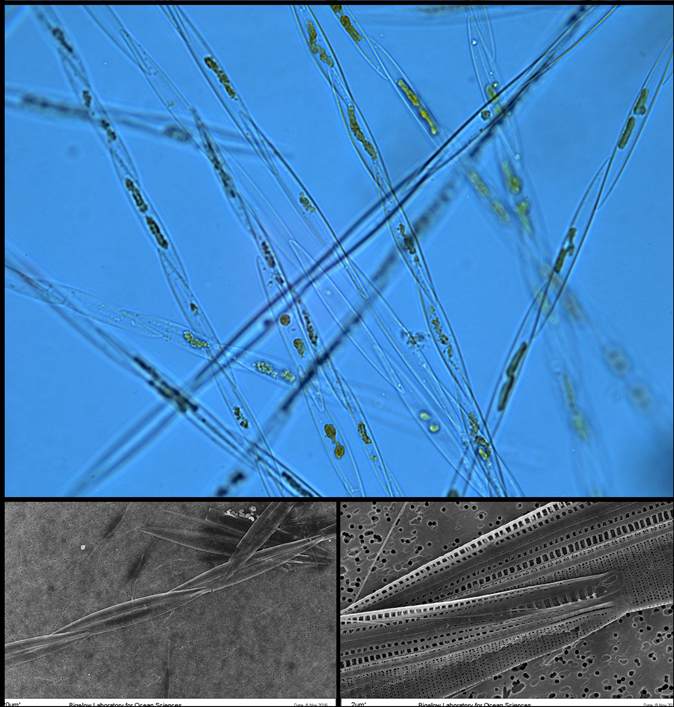The diatom Pseudo-nitzschia produces the neurotoxin domoic acid, which can impact both humans and marine wildlife when consumed. This project seeks to build and implement a diverse molecular toolbox to enhance existing monitoring efforts for toxic Pseudo-nitzschia. The project team will rigorously test several developed molecular diagnostic techniques and will focus on field-deployable methods appropriate for diverse end users, including state managers.

Why We Care
Over 50 species of Pseudo-nitzschia have been identified globally, and domoic acid (DA) production varies both across and within species. DA is an emergent threat in the Gulf of Maine and Gulf of Mexico and has led to shellfish harvest closures over the last decade; notably, each region is associated with distinct Pseudo-nitzschia species. Monitoring programs typically enumerate cells using light microscopy. However, toxic and non-toxic Pseudo-nitzschia spp. often coexist and cannot be differentiated without additional methodologies. Given that Pseudo-nitzschia blooms are observed in areas with emergent DA issues, and that DA levels can change rapidly, there is a clear need for rapid detection and quantification of toxic Pseudo-nitzschia species.
What We Are Doing
This project will implement a molecular toolbox to enhance existing monitoring efforts of Pseudo-nitzschia through three core activities. Initially, the project team will field-test existing molecular techniques to compare their ability to identify Pseudo-nitzschia and toxin threat from samples collected in both the Gulf of Maine and Gulf of Mexico. Following this, top-performing approaches will be assessed for their ability to be simplified and tailored toward field deployment. The result of this effort will be a streamlined, simplified, and tailored molecular toolbox that can be readily implemented by end users for routine testing of monitoring samples. Finally, the project team will work with state managers in Maine, New Hampshire, Massachusetts, and Florida to develop easy-to-use protocols and communication materials to ensure broad use of the optimized toolbox.
Collaborators include researchers at Gloucester Marine Genomics Institute, Florida Fish and Wildlife Conservation Commission – Fish and Wildlife Research Institute, and Bigelow Laboratory for Ocean Sciences.
What We Found
This project is in the initial stages.
Benefits of Our Work
This project will allow resource managers to have earlier warning of toxic Pseudo-nitzschia species and prioritize activities and management where and when it is needed for the benefit of our local ecosystems and watersheds. This approach can also be tailored to other harmful algal species.
